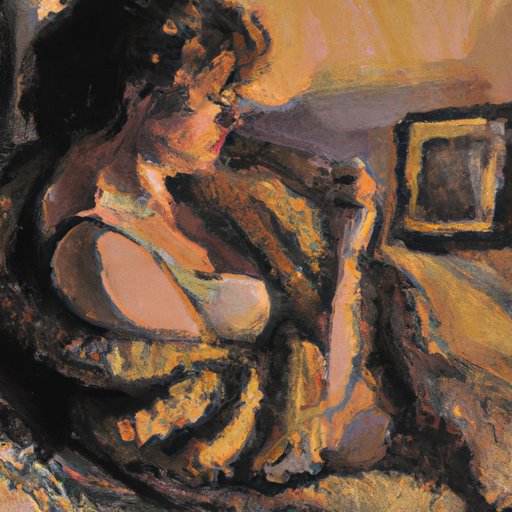
Introduction
Shadows are an integral part of art. They add depth, dimension, and realism to a drawing or painting. Unfortunately, drawing shadows can be a daunting task for beginners. But fear not! In this article, we will guide you through the basics of shadows, how to draw them step-by-step, showcase famous artworks, and provide tips for creating realistic shadows in different art styles and with various materials.
Guide on the basics of shadows
Shadows can be grouped into several types: cast, form, core, and more. Cast shadows, for instance, are created when an object blocks the path of light. They are usually sharp and distinct. Form shadows, on the other hand, are found on the surface of the object itself. They are not as dark as cast shadows and are found around the curved areas or corners of the object. Core shadows define the darkest point before softening into the form shadows. Other common types of shadows include drop shadows and self-shadows.
To understand how these shadows form, you’ll need to first understand light. Light travels in straight lines, and, when it encounters an object, it bounces off it and changes direction. The way the light changes direction determines how the object’s shadows are projected.
Step-by-step tutorial
Okay, now let’s dive into some practical tips for creating realistic shadows:
- Decide on the light source: Before you begin your drawing, decide where the light will be coming from. Will it be coming from above, below, or from the side?
- Identify the object’s planes: Once you have your light source, you’ll need to identify the various planes of the object (the front plane, side plane, etc.).
- Block in shadows: With your light source and object in mind, block in the shadow shapes where the object blocks the light.
- Gradually darken: Start darkening the shadows, but don’t forget to keep the differences in values visible between the cast shadows, form shadows, and core shadows.
- Add detail: Add some details to the shadows like textures and edges.
- Blend: Blend the shadows to avoid harsh lines and create a more natural look.
Remember that practice makes perfect. Consider starting with simple shapes to master basics before moving on to more complex objects.
Breakdown of art styles
Shadows are used in many different art styles to create mood, depth, and realism. Impressionists use shadows to create a distinct mood, while realist artists use them to show every detail of the subject matter. Expressionist artists use shadows to create interesting silhouettes and to create visual tension.
A few examples of artwork with amazing use of shadows include ‘Girl with a Pearl Earring’ by Vermeer, ‘The Starry Night’ by Van Gogh, and ‘The Birth of Venus’ by Botticelli.
Showcase of artists/styles
Many famous artists are known for their use of shadows. Rembrandt, for instance, used the interplay of light and shadow to create a theatrical depth in his work. Caravaggio, on the other hand, was famous for his dramatic use of chiaroscuro, with intensely dark shadows and bright highlights.
Using different materials
You can draw shadows with different materials, including pencils, charcoal, ink, and paint. Each medium produces a different look and feel to the shadows. Pencils are great for creating sharp detail and hard edges, while charcoal is great for creating soft edges. Ink adds a stark contrast and gives an overall dramatic look, while painting provides a softer gradient.
Make it interactive
We have come up with a few exercises and quizzes to help you practice and deepen your knowledge about the shadow. Check out the links below:
- Rembrandt’s Self-Portrait at the Age of 34: A brief Art History Study
- How to Draw and Shade Realistic Eyes | Step by Step Tutorial
- The Virtual Instructor: Shading Techniques
Conclusion
Mastering how to draw shadows is an essential skill for any artist, regardless of style or medium. By understanding the basics of shadows, following a few simple steps, and with some practice and experimentation with different materials and art styles, you’ll be able to create a wide variety of shadows that enhance your artwork.





